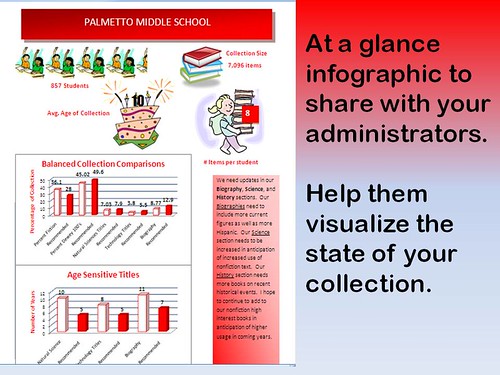As Common Core approaches nonfiction is becoming a hot topic for librarians. There are many articles on the topic. Some are here, here, and here. In case you haven't delved into the standards yet, you should be aware that students are expected to be reading about 50% fiction and 50% nonfiction in school by 8th grade. In high school the shift is 70% nonfiction and 30% fiction. This does include the content areas so you should still find a healthy dose of literature in English Language Arts.
The nonfiction focus does require preparation for librarians. We need to expect more use of our nonfiction resources. There are several tasks that we need to complete in order to be ready.
1. Weed your nonfiction.
Weed, weed, and when you think you are finished, weed some more.
Here are a few guidelines for weeding your collection. This is an excellent list of resources about weeding from ALA. One trick that has helped me is finding an excellent student helper (don't we all have at least one that stands out) and ask them to pull books from one area that they would get rid of. Then look through those titles. You have the final say because you know about projects, interests of all the students, and classics that you feel you should keep, but you will get a student perspective. That student doesn't care that you remember this book from your childhood or remembered purchasing the book. They will give you an honest opinion.
Many librarians are nervous about having empty shelves, but a wise professor in my master's program told me that as long as you have full shelves administrators will believe that you have plenty of funds. There is no reason to keep outdated, unused books if the only purpose is to fill up shelves. Research shows that weeding increases circulation because it gets the "junk" out of the way and students can see the "good" books. If you are still nervous, start with one small area and see how it goes.
2. Evaluate and share the results.
After weeding, you need to evaluate your collection. Make notes of areas and topics that you feel require additional titles. Invite your teachers to come in and give suggestions. Discuss projects, both present and future, and resources they will need for those projects. Run a collection analysis and see how you compare to recommendations. Don't just keep this information to yourself. Share this with administrators so they know the state of your collection and your needs. In our district we created one page infographic-style reports for each school and sent them to our superintendent in the hopes of receiving funds to update for the Common Core. We received a positive response. Thank you, Monique German for putting them together for us!

3. Purchase high interest nonfiction titles.
No matter what your budget is you will need to do your best to update your titles. I have found the recommended titles on many Common Core sites to be lacking so I have been attending webinars and reading blogs to get ideas for high interest nonfiction. I have created a Pinterest board of books within recommended range, both fiction and nonfiction, if you need a few ideas. If you want to contribute to the board email your Pinterest ID and I will add your name. I recommend following Nonfiction Monday for more ideas.
4. Nonfiction Promotion
Now that you have an updated area you need to market the material. Jennifer Lagarde has several excellent recommendations here like nonfiction book clubs, author visits and book displays. Book talk your nonfiction and share book trailers. I have been able to find inspiration on Pinterest, especially Fran Bullington's library display board. If you search "library displays" this is the list you find of boards with this title. There are several to choose from that should help you find a few creative ways to display your books. Consider creative arrangements that will make the area student-friendly. If you read this blog, you know I ditched Dewey, but if that is too extreme you can also increase signs and put books cover out to attract students to the area.
I know you have your own ideas and suggestions about preparing your nonfiction collection for Common Core. I would love to hear them. What am I missing?
Wondering what program you used to make the infographic? I'd love to start making them as well.
ReplyDeleteBelieve it or not...Word. The graphs were made in Excel then copied and pasted. I make most of mine in Power Point with clip art.
ReplyDelete